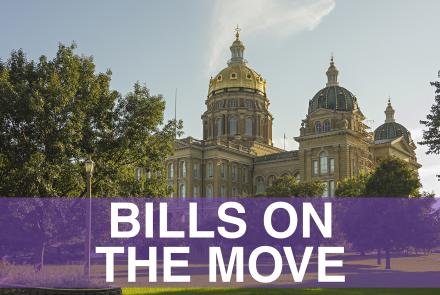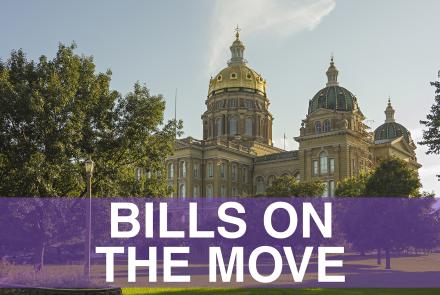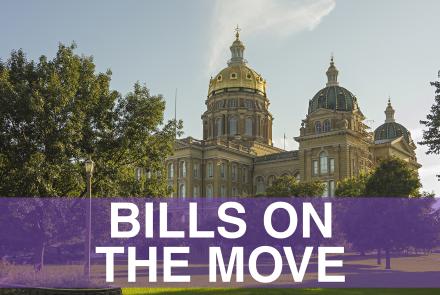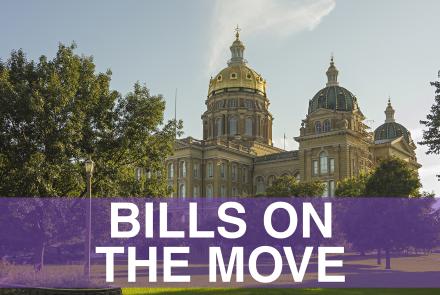Call to Action - SF 251 Administrative Expenditure Limitation
CALL TO ACTION
Administrative Expenditure Limitation SF 251
March 16, 2023
Download the Call to Action SF 251 Administrative Expenditure Limitation
SF 251 was approved by the Senate on Wednesday, 36:12 (4 Democrats voted with 32 Republicans to approve it and 2 Republicans joined 10 Democrats to oppose). UEN is registered opposed. The definition of administrative expenditures in the bill from the Senate Education Committee is worse than the original bill.
What the bill does: 1) eliminates the current 5% limitation on “executive administration,” which is considered the expenses for the school board and superintendent’s office for all districts. 2) Creates a new definition of “administrative expenditures” to mean activities that do not directly relate to student instruction or to the activity of students, and limits those expenditures to no more than 5% of the school’s general fund, for districts with budget enrollment greater than 1,000. Here’s the bill in its entirety:
Section 1. Section 279.45, Code 2023, is amended to read as follows:
279.45 Administrative expenditures.
The For school districts with a budget enrollment of one thousand or more, the administrative expenditures as a percent of a the school district’s general fund for a base year shall not exceed five percent. Annually, the board of directors of each school district in the state shall certify to the department of education the amounts of the school district’s administrative expenditures and its general fund. For the purposes of this section, “base year” means the same as defined in section 257.2, and “administrative expenditures” means expenditures for executive administration school district purposes or activities that do not directly relate to student instruction or to the activity of students, but instead support the program delivery and development activities including but not limited to salaries for administrators and office staff, school administration, general administration, and data processing and collection services. The state board shall adopt rules pursuant to chapter 17A for the interpretation and proper administration of this section.
Sec. 2. APPLICABILITY. This Act applies July 1, 2024, for school budget years beginning on or after that date.
Background:
Senator Zaun, Sponsor and Floor Manager of the bill in the Senate, referenced a spreadsheet that showed the change in students, teacher FTEs, all other FTEs and total FTEs, from FY 1993 to FY 2021. He stated his belief that administrators are paid too much and districts should be spending more money on classrooms. The footnotes on this spreadsheet indicate the data was from NCES:
|
|
Share of Districts |
|
Staffing Surge* |
95% |
|
Teacher Surge** |
88% |
|
Non-Teacher Surge*** |
95% |
|
This information comes from data sent by your state to the National Center for Education Statistics (NCES) at the U.S. Department of Education. |
|
|
The data was retrieved from NCES at https://nces.ed.gov/ccd/elsi/ |
|
|
Please report any errors in the data to your state department of education so they may make the correction with the NCES at the U.S. Department of Education. |
|
|
* Percent of districts where the growth in total staff was greater than the growth in students |
|
|
** Percent of districts where the growth in teachers was greater than the growth in students |
|
|
*** Percent of districts where the growth in non-teaching staff was greater than the growth in students |
|
Verify your local numbers found in the district analysis here: District Staffing Surge 1993 to 2021
The National Conference of Education Statistics, NCES, defines administrative costs as: “Administration (District Expenditure): Expenditures for the administration of schools and school districts. Includes expenditures for: the board of education, administration of Local Education Agencies, the office of the principal, full-time department chairpersons, graduation expenses, and business and central offices (fiscal services, budgeting, payroll, purchasing, storage, material distribution, planning, research, evaluation, staff recruitment and data processing).”
This definition is likely less expansive than that which is proposed in SF 251 yet would still place all 327 school districts out of compliance.
Key Messages: Ask Representatives to oppose SF 251 Administrative Expenditure Limitation.
- The definition of administration in SF 251 is very broad and leaves the DE little discretion to align with accounting codes already required to be reported.
- Every district would be out of compliance if the limitation is set at 5% and would have to cut expenditures and lay off staff to comply.
- Much of the growth in non-teaching positions since 1993 is due to mandates and requirements of state and federal government, changes in student needs and increased requirements for the use of data systems. See district-specific data on the FTE growth spreadsheet shared by Sen. Zaun (Bill Sponsor and Floor Manager) District Staffing Surge 1993 to 2021. Confirm the changes in your district and explain why those numbers have grown faster than the FTE teacher count.
- Forced reduction of administrative and support staff would increase the workload of teachers.
- See NCES data per district with their definition of administrative expenditures (Executive plus school administration) posted here NCES Data 2019 by Admin Expenditures Percentage.
Find your Representatives here: https://www.legis.iowa.gov/legislators/house
Reach them at home over the weekend. To call and leave a message at the Statehouse, the House switchboard operator number is 515.281-3221. You can ask if they are available, leave a message for them to call you back, or just leave a short message such as “please oppose the Senate’s SF 251 Limitation on School Administration Expenses.” (Legislators are typically at the Capitol from Monday midday through Thursday afternoon.)







